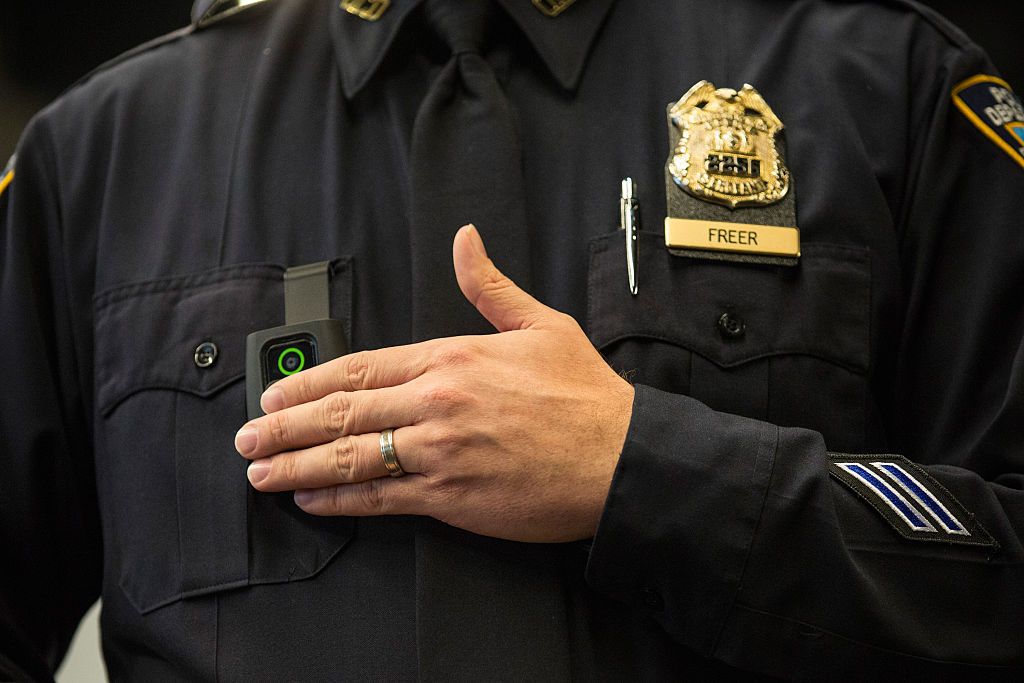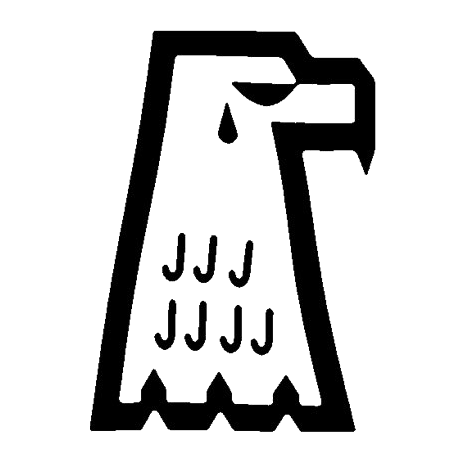The Bastard Children of the 2001 Authorization to Use Military Force
A first look at new research from the Brown University Costs of War Project. Plus: the global policeman turns off his body camera


Edited by Sam Thielman
THE FIRST NUMBER to know is 22. That’s the number of countries where, since September 2001, the United States has formally justified counterterrorism operations—from airstrikes to foreign-partner “training” (in quotes because often “training” operations and U.S. combat blur) to outright invasion—using the 2001 Authorization To Use Military Force.
Within those 22 countries, an “unknown” number of operations have occurred, according to Stephanie Savell of Brown University’s Costs of War Project.
“In many cases the executive branch inadequately described the full scope of U.S. actions,” Savell writes in a new analysis provided early to FOREVER WARS. “For example, in 2013 the Obama administration reported that in Libya, ‘U.S. armed forces captured a member of Al Qaeda,’ referring to accused al-Qaeda operative Abu Anas al-Libi, but made no reference to a continued U.S. airstrike campaign, even though the U.S. conducted three strikes against militants in Libya that same year.”
Observers have long understood the AUMF as an open-ended grant of lethal, carceral, surveillance, and other military authorities stemming from 9/11. It functions as an Emergency Law, and the U.S. immediately understands such things when, say, Egypt undertakes them. But the AUMF, Savell’s research underscores, is the beginning of the story, not the end. For the War on Terror has lasted sufficiently long for the AUMF to have bastard children.
FOREVER WARS is part of the Discontents Substack cartel, and with cartelization comes benefits. Subscribe to Forever Wars for a year and receive six FREE months of two of our affiliated newsletters, Welcome To Hell World by Luke O’Neil and Derek Davidson’s Foreign Exchanges. Both of them are excellent, and you’ll get them both at the subscriber tier. Subscribe today! And with the holidays approaching, remember: REIGN OF TERROR is on sale!
THE SECOND NUMBER to know is 85. That’s the number of countries where Savell’s previous research documented the presence of U.S. counterterrorism operations—broadly defined. Her new analysis seeks to reconcile the 22 and the 85.
In that analysis, she finds a panoply of authorities that can do the work of the AUMF in justifying counterterrorism. Many of them are widely known, like the 2002 AUMF—to overthrow Saddam Hussein—which Congress and the Biden White House agree should be repealed. Others are claims about the “Article II” Constitutional war powers allegedly inherent in the office of the president. But then there are obscure, important grants like Section 127(e), which lets U.S. Special Operations Forces functionally command foreign militaries under its mentorship. (Most often you’ll hear it pronounced “One Twenty-Seven Echo.”) Wesley Morgan, a diligent and well-sourced reporter whose work you should read, wrote the most important Section 127(e) piece to date.
“Investigative journalists have documented 127(e) programs in Mali, Tunisia, Cameroon, Kenya, Libya, Niger, Nigeria, and Mauritania. Of these, Mauritania, like Mali and Tunisia, has never been mentioned in presidential AUMF citations,” writes Savell. “There is little government transparency about or oversight of this program; there are likely 127(e) programs in additional countries beyond those eight.” Reflecting the handoff between the War on Terror and Great Power Competition, in 2018, Congress created Section 1202, which applies 127(e)’s grants of special-operations authority for operations against China and Russia.
In official statements to Congress, the White House often invokes the use of the AUMF vaguely, saying it authorizes mere “Support for CT [Counterterrorism] Operations,” or “Foreign Military Training or Equipping,” or something similarly unclear. That’s happened, per Savell’s survey, in Cameroon (2017-19); Chad (same); Eritrea (2004-5); Ethiopia (2004-5); Georgia (2002-4); Kenya (2004-5 and again in 2017-21); Lebanon (2017-21); Niger (2017-21); Nigeria (2017-2019); and the Philippines (2002-3 and again in 2017-21). In Turkey, which has provided U.S. staging operations against the so-called Islamic State since 2015, there’s the more detailed explanation of “deployment of combat aircraft and personnel for anti-ISIS strikes.”
Savell’s latest analysis gives due emphasis to U.S. military operations in Mali and Tunisia, 127(e) campaigns. They include an hours-long U.S. combat incident in Mali in 2018 that one veteran told Military Times was “so, so downplayed.” Another, in Tunisia, appears to be a Marine Raider battle at Mount Semmama, near Algeria.
As an aside, look at the commencement dates of those operations in Chad, Kenya, Lebanon, Niger, Nigeria, Cameroon and the Philippines and remember the bullshit that MAGA is trying to sell you about Donald Trump not starting any new wars.
Read Savell’s new analysis here. It underscores that repealing the 2001 AUMF, as arduous and necessary a political task as that is, will not be enough to kill the War on Terror.
Now let’s focus on a new glimpse we have of what those operations look like in practice, as well as where they increasingly occur.
OFTEN, WHEN A U.S. SPECIAL OPERATIONS targeting unit known as Talon Alpha prepared to kill people in Syria who likely were not ISIS fighters, a curious gap in video footage would appear. According to suspicious military and intelligence officials who told The New York Times about Talon Alpha, in those crucial moments, the screens of drone operators wouldn’t display images of the strike site. One Air Force officer who “reviewed dozens of task force strikes where civilians were reportedly killed” told the paper that he “frequently” saw “cameras jerk away at key moments, as if they were hit by a wind gust.” The officer became convinced the movement was intentional “only after seeing the pattern over and over.”
I’ve crouched in the claustrophobia-inducing refrigerated connexes that house drone operators, where the glow of the dual screens—one for an Army warrant officer, the other for a much-older contractor—were the only source of light. I’ve watched motorcycles and cars flit through the infamous “soda straw,” the stare of a drone camera that has no peripheral vision, and held my breath as the operators’ joysticks fixed that stare on one or another vehicle. The apparatus of secrecy concealing the realities of U.S. warfare in the 21st century ensures that not many people have seen that. Many more of us have seen or read about instances when police turn off their body cameras before or immediately after taking someone’s life.
Those of us who report on either drone strikes or police slayings tend to write about one phenomenon as disconnected from the other. They are in fact the same thing. Turning off drone cameras is the same sort of cover-up for the military (and the CIA) that turning off body cameras is for the police. There is not one United States that slays Black and brown people at home and a different United States that slays Black and brown people abroad. There is only one United States of America. Its works at home forecast its works abroad, and its works abroad are beta tests for its works at home. A global policeman wants what his local counterparts want: qualified immunity.
The conservative defense intellectual Fred Iklé once wrote that all wars must end. That was naive and outdated when Ikle wrote it. The American way of war is global policing. Long before the U.S. occupied Afghanistan for 20 years, it occupied Haiti for 19 years for the benefit of what today is Citibank. Before the U.S. occupied Haiti, it occupied the Philippines, where it took notes from the Spanish soldiers it was ostensibly fighting on how to waterboard Filipinos, who it was more interested in fighting. Twenty-six out of 30 generals who conducted that counterinsurgency in the Philippines, according to Roxanne Dunbar-Ortiz’s An Indigineous People’s History of The United States, were experienced in the final wars of extermination against the native nations of the west from the Civil War to Wounded Knee. Before it was called global policing, it was called manifest destiny.
Ours are not wars whose operations move toward conclusion. They are wars that seek to subjugate populations, and subjugation requires persistence. Policing and warfare, in the context of global domination, are difficult to distinguish, because there isn’t a meaningful distinction. Talon Alpha is as American as apple pie.
Last week, I mentioned last week that one of the legacies of the ongoing War on Terror is it that it provided the U.S. military with its first enduring footprint on the African continent. The commanding general of the U.S. Africa Command is Stephen Townsend. Before Townsend commanded AFRICOM, he commanded the U.S. war against ISIS during its most intense period, the 2016-2017 period when ISIS waged months-long campaigns to retake Mosul and Raqqa. Before it was controversial, Townsend in 2017 boasted to Time that in a “dynamic strike,” the decision to launch a missile occurs in “minutes.”
We now know the role of Talon Alpha in that process. When the Times caught up with Townsend to ask him about the unit, he was “dismissive of widespread reports from news media and human rights organizations describing the mounting toll” of dead civilians due to processes that he, like his predecessors and successors, oversaw. The point of diverting the drone cameras is to make sure no one can prove Townsend wrong.
But, of course, even when everyone can see a drone strike incinerating innocent people, the Pentagon will hold no one accountable.
The AFRICOM job is Townsend’s reward for his command in Iraq and Syria. There is no reason to believe that, given the opportunity, he and the machinery he commands, which his successors will also command, will operate any differently. The ongoing War on Terror provides all the opportunity necessary, especially as it merges with a Cold War against China that considers Africa a field of imperial resource competition. Savell’s research reminds us how little we will know about what unfolds after the AUMF blesses a conflict, when it blesses a conflict at all. Perhaps we should think of the AUMF less as a war than as a method of warfare.

